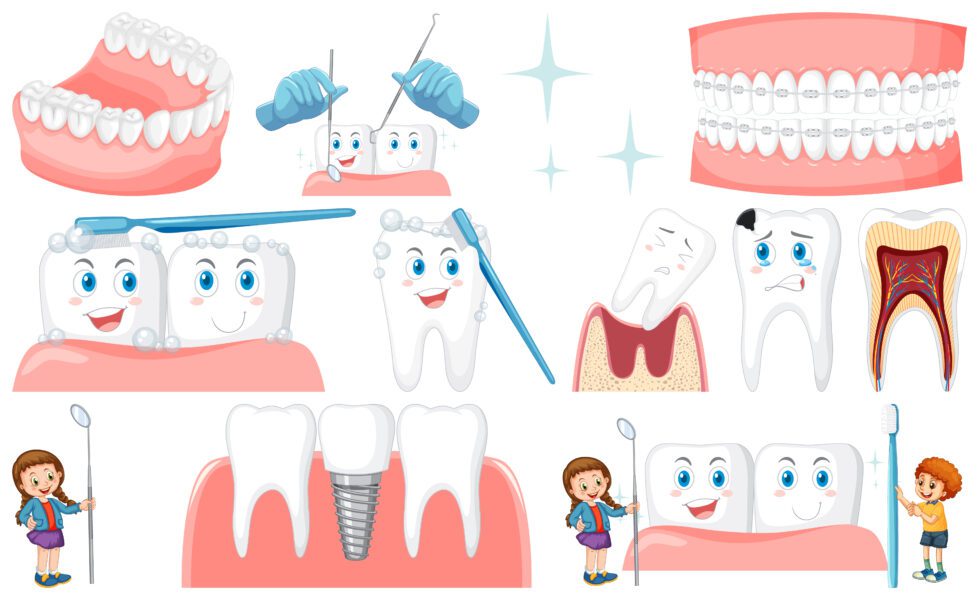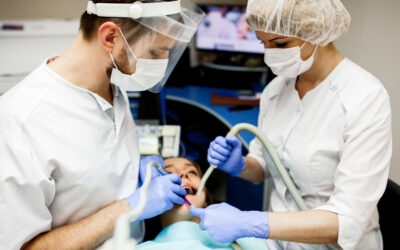Jagged teeth can be a cause of concern for both children and adults. They refer to teeth that are uneven, rough or have irregular edges. While having jagged teeth may not necessarily cause any discomfort or pain, they can affect one’s self-confidence and smile aesthetics.
Understanding the meaning, causes, and treatment options for jagged teeth is essential in order to address this dental issue effectively. Additionally, some individuals may be interested in exploring potential ways to fix jagged teeth at home.
However, it is important to note that attempting to fix dental problems at home without professional guidance can be risky and may lead to further complications.
What is Jagged Teeth?
Jagged teeth refer to teeth that have uneven or irregular edges. Unlike normal teeth with smooth and even contours, jagged teeth can have rough, serrated, or roughened edges that may appear frayed or chipped. This dental condition can occur due to a variety of reasons, including teeth grinding or clenching, improper oral hygiene, tooth decay, dental trauma, or genetic factors.
Jagged teeth not only affect the aesthetics of a person’s smile, but they can also lead to functional problems such as difficulty in chewing or speaking. Treatment options for jagged teeth often involve dental procedures like tooth reshaping, bonding, veneers, or in severe cases, dental crowns or orthodontic treatment.
Seeking professional dental advice is essential to address the underlying cause and restore the appearance and functionality of the teeth.
Causes of Jagged Teeth in Child and Adults.
Jagged teeth, also known as uneven or misaligned teeth, can occur in both children and adults due to various causes. These causes can be classified into two main categories: developmental and acquired factors.
1. Developmental Causes.
a) Genetics: One of the primary factors contributing to jagged teeth is genetics. Inherited traits from parents can predispose individuals to have naturally misaligned teeth. Genetic factors may affect jaw size, tooth size, and the overall structure of the mouth, leading to irregular tooth positioning.
b) Childhood habits: Certain childhood habits can influence the development of jagged teeth. Thumb sucking, pacifier use, tongue thrusting, and prolonged bottle feeding can all exert pressure on the teeth and jaws, causing them to shift or become misaligned over time.
c) Premature loss of baby teeth: When baby teeth are lost too early due to decay, trauma, or other reasons, the adjacent teeth may shift into the vacant space prematurely. This can cause misalignment and irregularities in the eruption pattern of permanent teeth, leading to jagged teeth.
2. Acquired Causes:
a) Dental trauma: Accidents or injuries to the mouth area can result in the displacement or movement of teeth. Fractured or chipped teeth can create jagged edges, affecting the overall alignment of the dentition.
b) Poor oral habits: Certain oral habits, such as teeth grinding (bruxism), nail biting, or chewing on hard objects, can cause tooth wear and tear. Over time, this can lead to uneven tooth surfaces and jagged edges.
c) Dental conditions: Certain dental conditions can contribute to the development of jagged teeth. For instance, overcrowding of teeth, dental malocclusions (e.g., overbite, underbite, crossbite), or impacted teeth can all result in irregular alignment and jagged tooth edges.
d) Jaw abnormalities: Structural abnormalities in the jaw, such as a narrow or asymmetric jaw, can affect tooth alignment and lead to jagged teeth.
| 💡 Tips FreakToFit.com It is important to note that these causes can vary between children and adults. While developmental factors tend to be more prevalent in children, acquired causes become more significant in adults due to lifestyle and aging factors. Regardless of the causes, seeking early orthodontic evaluation and treatment can help address jagged teeth and prevent potential oral health complications in the future. |

Treatment of Jagged Teeth.
1. Dental Bonding.
Dental bonding is a popular and non-invasive treatment option for correcting jagged teeth. In this procedure, a tooth-colored resin material is applied and molded to the affected teeth, filling in the irregularities and reshaping them to achieve a more harmonious appearance. Dental bonding is a quick and cost-effective solution that can be completed in a single visit to the dentist’s office.
2. Dental Veneers.
Dental veneers are thin, custom-made shells that are bonded to the front surface of the teeth to improve their appearance. Veneers are an excellent choice for addressing jagged teeth, as they can effectively conceal any irregularities and create a uniform, natural-looking smile. This treatment option is more durable and stain-resistant than dental bonding, providing long-lasting results.
3. Dental Crowns.
For more severe cases of jagged teeth or when the tooth structure is significantly compromised, dental crowns may be recommended. Dental crowns are tooth-shaped caps that are placed over the affected teeth, covering the entire visible portion.
By doing so, they restore the tooth’s shape, size, strength, and improve its overall appearance. Crowns can be made from various materials, including porcelain, metal, or a combination of both, depending on the specific needs of the patient.
4. Orthodontic Treatment.
In some cases, jagged teeth may be a result of misalignment or crowding. Orthodontic treatments, such as braces or clear aligners, can help reposition the teeth into their correct alignment, eliminating any irregularities and achieving a straighter, more harmonious smile. This treatment option may take longer than other methods, but it offers comprehensive and long-term results for both cosmetic and functional improvements.
5. Tooth Contouring.
Tooth contouring, also known as enamel reshaping, is a conservative treatment option for minor cases of jagged teeth. This procedure involves removing small amounts of enamel to reshape the tooth, creating a smoother and more uniform appearance. Tooth contouring is a quick and painless procedure that can be completed in a single dental visit, providing immediate results.
6. Gum Contouring.
In some instances, jagged teeth may be a result of an uneven gum line rather than the actual teeth themselves. Gum contouring, also known as gum reshaping, is a procedure that involves removing excess gum tissue to create a more balanced and symmetrical gum line. This treatment can effectively address the appearance of jagged teeth by creating a more proportionate frame around them.
| 💡 Tips FreakToFit.com It is important to consult with a qualified dentist or orthodontist to determine the most suitable treatment option for addressing jagged teeth. They will evaluate the individual’s specific dental condition and recommend the appropriate course of action to achieve optimal results, ensuring a confident and healthy smile. |
How to fix jagged teeth at home?
Here are a few suggestions for improving the appearance of jagged teeth at home:
1. Dental Filing.
Using a fine-grit emery board or dental file, gently file down the rough edges of the jagged tooth. It is crucial to exercise extreme caution and avoid applying excessive pressure to prevent further damage or sensitivity.
2. Dental Wax.
Dental wax, commonly used for orthodontic purposes, can temporarily smooth out the rough surfaces of jagged teeth, providing a more uniform appearance. Ensure the tooth is clean and dry before applying a small amount of wax. However, this method is purely cosmetic and is not a permanent fix.
3. Dental Veneers.
Temporary dental veneers, available at some drugstores or online, can be used to cover the jagged edges of teeth, creating a smoother appearance. These veneers are typically made from a pliable material that can be molded to fit over the tooth.
While this method can be effective for a short-term solution, it is important to consult a dentist for a professional evaluation and discussion of long-term options.
4. Teeth Whitening.
Teeth whitening treatments can help to improve the appearance of teeth, including jagged ones. By brightening the overall color of the teeth, any irregularities might become less noticeable.

Various over-the-counter whitening products, such as whitening toothpaste or strips, can be used at home. However, it is advisable to consult a dentist to ensure the chosen method is suitable for your specific dental condition.
5. Maintaining Good Oral Hygiene.
Practicing proper oral hygiene, such as regular brushing, flossing, and using mouthwash, is essential for maintaining overall dental health. While this may not directly fix jagged teeth, it can prevent further deterioration or complications that may arise from neglecting oral hygiene.
| 💡 Tips FreakToFit.com Remember, these home remedies are temporary solutions and may not address the underlying causes of jagged teeth. For a long-lasting fix, it is highly recommended to seek professional dental advice. A qualified dentist can provide a comprehensive evaluation, diagnose the underlying issue, and suggest appropriate treatments such as dental bonding, tooth reshaping, or orthodontic procedures. |
Also Read: Things To Know Before and After Undergoing Teeth Whitening Procedure
Frequently Asked Questions.
No, having jagged teeth does not cause cancer.
Jagged teeth are not considered normal and may require dental treatment or correction.
Bottom Line.
Jagged teeth can have a significant impact on an individual’s oral health, overall well-being, and self-confidence. They can result from various factors, including genetics, poor oral hygiene, trauma, or certain dental conditions. While some individuals may view jagged teeth as a unique feature, they can lead to functional issues such as difficulty in chewing or speaking, as well as increased vulnerability to dental problems like tooth decay and gum disease.
Fortunately, modern dentistry offers several treatment options to correct jagged teeth, including orthodontic treatments, dental bonding, veneers, or even dental implants. Seeking professional advice from a dentist is crucial to determine the best course of action based on each individual’s specific needs. Ultimately, addressing jagged teeth not only improves oral health but also enhances one’s confidence and overall quality of life.

 Workout
Workout
 Meditation
Meditation


 Stories
Stories


 Podcast
Podcast E-book
E-book











